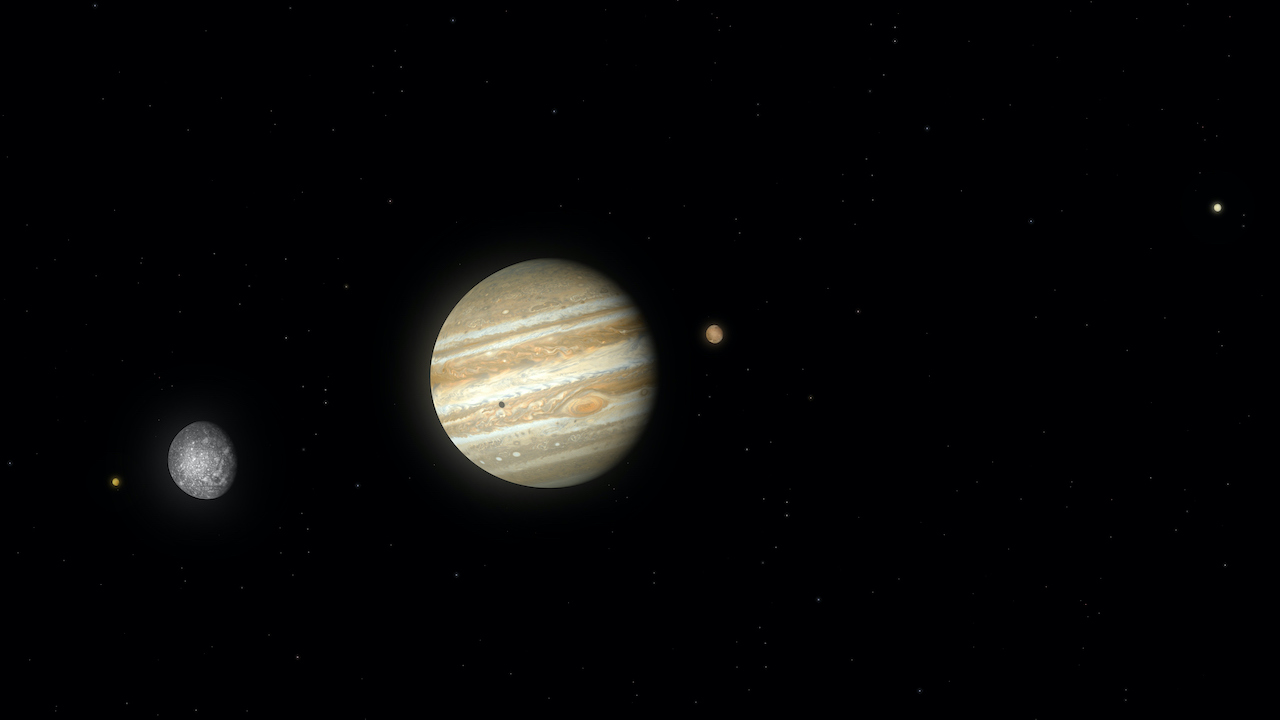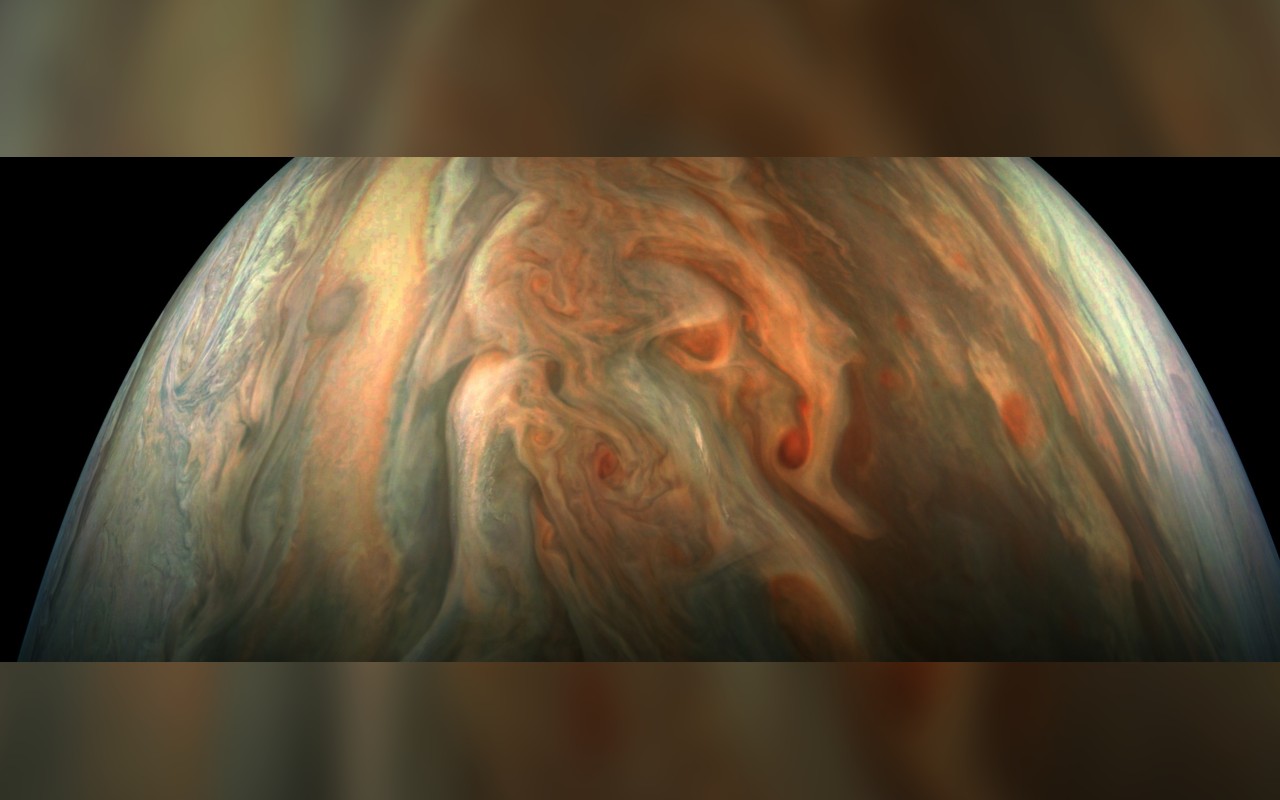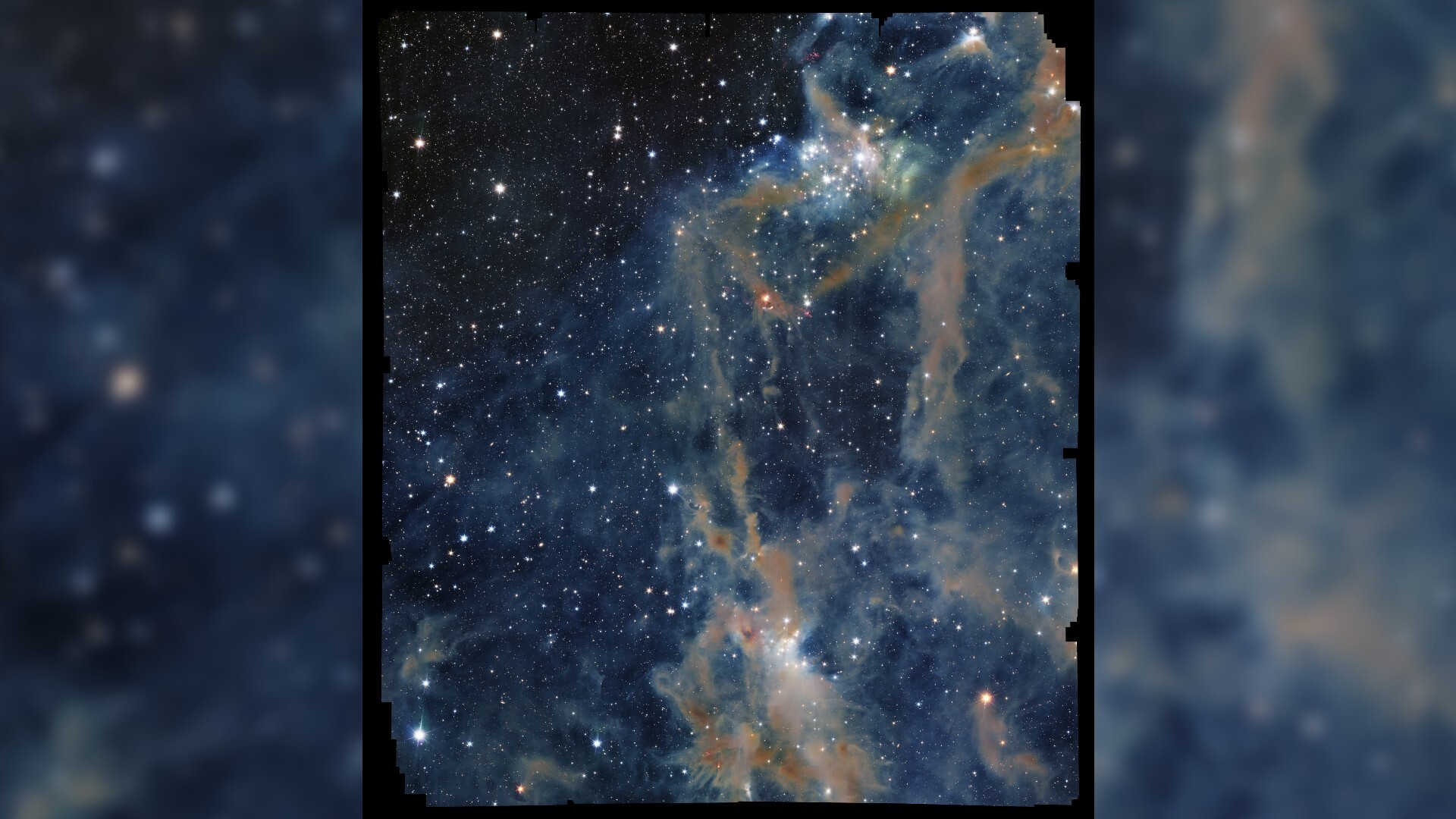How big is Jupiter?
Jupiter is about 318 times as big as Earth.

It is the largest planet in the solar system, but just how big is Jupiter? The gas giant is approximately 318 times as massive as Earth, according to planetary scientist Alan Boss. If the mass of all of the other planets in the solar system were combined into one "super planet," Jupiter would still be two and a half times as large.
Radius, diameter and circumference
Jupiter has a mean radius of 43,440.7 miles (69,911 kilometers), according to NASA Science. That's about a tenth that of the sun. However, its rapid rotation — it spins once every 9.8 hours, according to the journal Acta Astronautica — causes it to bulge at the equator, where the diameter is 88,846 miles (142,984 km). In contrast, the diameter at the poles is only 83,082 miles (133,708 km). This stretched shape is known as an oblate spheroid.
According to NASA's statistics, if you were to walk around the equator of Jupiter, you would travel 272,946 miles (439,264 km), over 10 times the distance around Earth's center line.
Because Jupiter is made of gas, mostly, its surface is considered uniform. As such, it lacks high and low points — mountains and valleys — such as those found on rocky terrestrial planets.

Density, mass and volume
Known as a gas giant, Jupiter is composed primarily of hydrogen and helium, according to NASA. It weighs in at 1.9 x 1027 kilograms. Although it is significantly more massive than Earth, it is only a fifth as dense, at 1,326 kg/m3, because it is made of gas rather than rock.
The volume of Jupiter is 1,431,281,810,739,360 cubic kilometers, 1,321 times that of Earth.
The surface area of this enormous planet is 23,713,907,537 square miles, or 6.1419x1010 square kilometers, 120 times that of our planet.
Breaking space news, the latest updates on rocket launches, skywatching events and more!
Jupiter's structure resembles that of the sun, but would need to be 75 times its present mass to undergo the fusion of hydrogen that fuels a star, according to the journal Science. The mass of the largest gas giant planets found outside of the solar system is often given in terms of the enormous planet.
Additional resources
You can learn 10 key facts about Jupiter at NASA Science's Solar System Exploration page. Alternatively, this video by NASAeClips explains the Astronomical Units (AUs) used to scale the solar system.
Bibliography
"Solar System". Boss, Alan P. AccessScience (2019). https://www.accessscience.com/content/solar-system/633800, McGraw-Hill Education
"Interiors of giant planets inside and outside the solar system." Guillot, Tristan. Science (1999). https://www.science.org/doi/abs/10.1126/science.286.5437.72
"Galileo preparing for Jupiter arrival". Acta Astronautica (1995). https://www.sciencedirect.com/science/article/abs/pii/009457659500069C

Nola Taylor Tillman is a contributing writer for Space.com. She loves all things space and astronomy-related, and always wants to learn more. She has a Bachelor's degree in English and Astrophysics from Agnes Scott College and served as an intern at Sky & Telescope magazine. She loves to speak to groups on astronomy-related subjects. She lives with her husband in Atlanta, Georgia. Follow her on Bluesky at @astrowriter.social.bluesky
